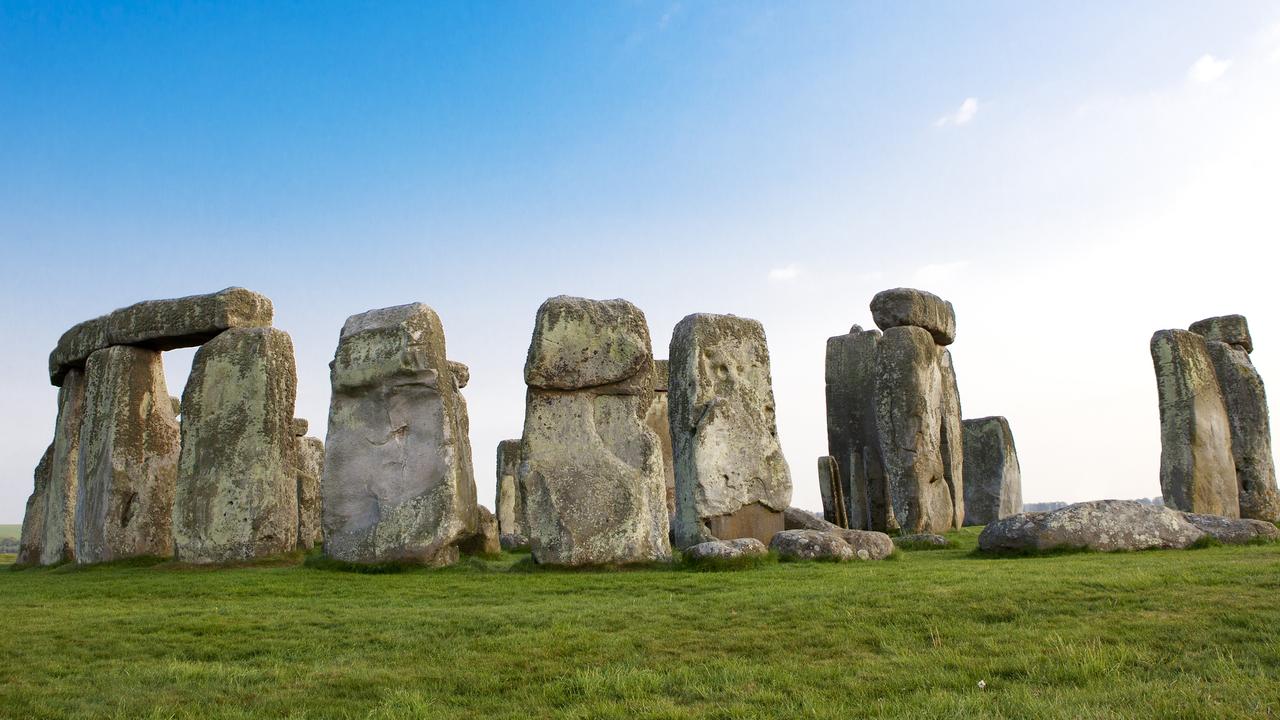Climate protesters arrested for spraying prehistoric Stonehenge with orange powder
Police have arrested two men after prehistoric rocks at Stonehenge in Britain were covered in a cloud of orange powder by climate protesters

READING LEVEL: GREEN
Environmental protesters* have shocked heritage* experts and tourists after spraying orange powder on Britain’s ancient* Stonehenge structure.
The prehistoric* stones were left covered in an orange substance sprayed from a canister on the eve of summer solstice celebrations, which mark the longest day of the year in the northern hemisphere.
“This is extremely upsetting and our curators are investigating the extent of the damage,” said English Heritage, the charity that manages Stonehenge.
Police arrested two climate protesters from the Just Stop Oil movement on suspicion of damaging the stone megaliths*.

Members of the public rushed to stop the men and wrestled the spray cans away.
Just Stop Oil said 21-year-old student Niamh Lynch, and Rajan Naidu, 73, had used “orange cornflour” for the stunt and it would dissolve in the rain.
However, the attack was quickly condemned* by Prime Minister Rishi Sunak as a “disgraceful act of vandalism”.
Opposition leader Keir Starmer called the group “pathetic*” and said the damage was “outrageous*”.
Just Stop Oil wants Britain to sign a treaty* to phase out fossil fuels such as coal, oil and gas by 2030. It is one of many groups that have gained attention – and received criticism – for disrupting sporting events, splashing paint and food on famous works of art and interrupting traffic to draw attention to the global climate crisis.

Stonehenge was built on the flat lands of Salisbury Plain in stages starting 5000 years ago, with the unique stone circle erected in the late Neolithic Period about 2500BC.
Some of the stones are known to have come from southwest Wales, nearly 240km away, but the origins of others remain a mystery.
The popular tourist spot and UNESCO World Heritage Site in southern England remains open.

POLL
GLOSSARY
- environmental protesters: people opposed to practices that may harm the natural world
- heritage: anything from the past or handed down by inheritance
- ancient: belonging to the distant past
- prehistoric: relating to the period before written records
- megaliths: a large stone that forms a prehistoric monument
- condemned: declared wrong or evil
- pathetic: weak or inadequate
- outrageous: shockingly bad
- treaty: an agreement
EXTRA READING
Solving the Stonehenge mystery
‘Astonishing’ monument found next to Stonehenge
Wallace pasted over King’s portrait
QUICK QUIZ
1. What is the name of the group behind the Stonehenge vandalism?
2. What do they claim the orange powder is made from?
3. What are the large stones called?
4. What do the protesters hope to achieve?
5. Where and when was Stonehenge first built?
LISTEN TO THIS STORY
CLASSROOM ACTIVITIES
1. Will it help?
Do you think Just Stop Oil’s actions will help bring an end to using fossil fuels? Use information in the story and your own ideas to write a paragraph explaining your answer to this question.
Time: allow at least 20 minutes to complete this activity
Curriculum Links: English, Civics and Citizenship
2. Extension
Use your research skills to find some of the different theories about how and why Stonehenge was built. Choose one that you think could be closest to the truth. List as many reasons as you can think of, and find, for your choice.
Time: allow at least 45 minutes to complete this activity
Curriculum Links: English, History
VCOP ACTIVITY
Opener up-level it
Make a list of all the openers in the article. Pick three that repeat and see if you can replace them with another word, or shuffle the order of the sentence to bring a new opener to the front.
Don’t forget to re-read the sentence to make sure it still makes sense and that it sounds better.

